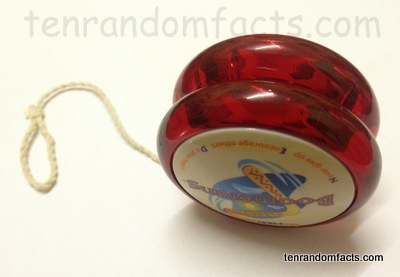Spin, spin… Can you do tricks on a yo-yo?
- Yo-yos are essentially toys, generally composed of two cylindrical discs connected by an axle, with an attached string.
- Terracotta examples of yo-yos have been found in Ancient Greek art dating between 400 – 500 BC.
- The first modern patent of a yo-yo was in 1866 by James Haven and Charles Hettrich, and it was named a ‘whirligig’ and a ‘bandalore’.
- International yo-yo competitions, where performance is judged, are held all over the world every year, with contestants from many backgrounds.
- The term ‘yo-yo’ possibly came from one of the languages spoken in the Philippines, from a word meaning ‘come back’ or ‘spring’, although its origins are uncertain.
- A yo-yo has also been called a ‘bandalore’ (a French term) and a ‘quiz’, and was named a ‘yo-yo’ in 1928 in the United States, by Pedro Flores, who was a Filipino immigrant.
- Japan has some of the best yo-yo masters, most notably world champion Shinji Saito.
- One of the most common yo-yo tricks is ‘walk the dog’, which is when the toy appears to be spinning along the ground in front of your feet.
- Cheap yo-yos can spin approximately 10-20 seconds, with a record of nearly 4 minutes, while professional ball bearing yo-yos can spin for 1-4 minutes, with a record of just over 21 minutes.
- Yo-yos are generally symmetrical, with weight distributed more on the edges of the discs, although this can vary.
Bibliography:
Behar, S & Yarham, R 2008, Great Inventions, Igloo Books Ltd, Cottage Farm, Sywell
Yo-yo, 2013, Wikipedia, <http://en.wikipedia.org/wiki/Yo-yo>






